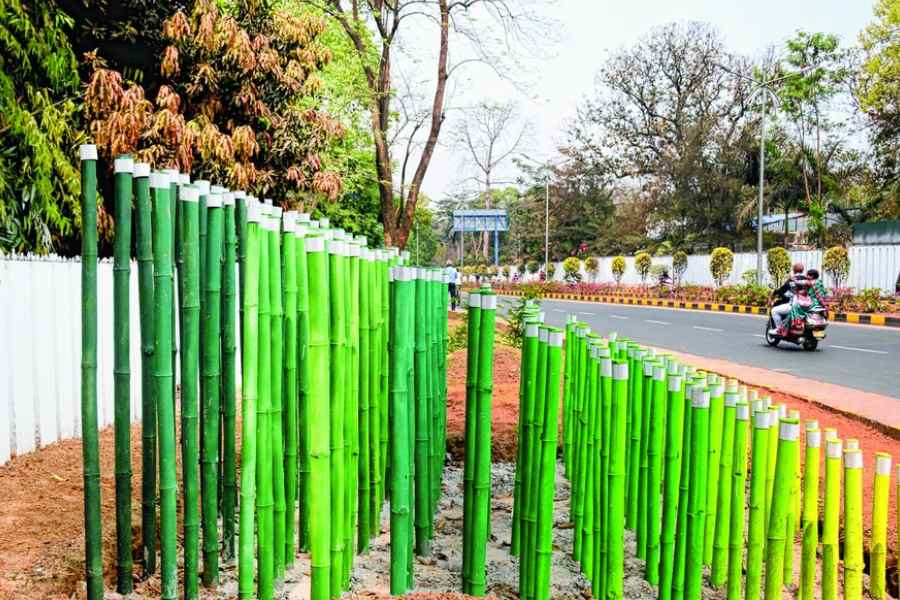Bamboo may dominate India’s economic landscape soon. The Niti Aayog has spearheaded a robust policy to harness its potential — from being a fabric to biofuel.
The bamboo shoot has been part of the Indian diet, especially in the northeastern states. Most tribes in the region consume bamboo in various forms. The Manipuri usoi ooti and soibam, made with bamboo, maize, cucumber, coriander and milk, are served with chapatti or paratha. The Mizo delicacy, rawtuai-bai, is made by mixing chillies and other spices, and eaten as stew with pork. Mia gudhog, Tripura’s famous bamboo shoot curry, is another popular meal. Bamboo biryani, originally a tribal dish from the Araku Valley in Andhra Pradesh, has donned many variations and flavours in modern kitchens across India. A detour through the districts of Nagaland, Mizoram or Tripura would reveal women busy with culinary errands involving bamboo shoots. Another typical activity in these areas is the drying of bamboo shoots for sustenance.
An interesting feature is that the technique employed to ferment bamboo is unique to tribes and ethnicities. These techniques are passed on orally from one generation to the next in the form of story-telling. The major tribes of Meghalaya — the Khasis, Garos and Jaintias — soak the chopped bamboo shoots in a water-filled container. The fermented shoots retain their crunchiness with a tangy flavour relished by locals. In Arunachal Pradesh, a bamboo basket covered with leaves is used to ferment the shoots. The Meiteis of Manipur use an earthen pot for this purpose while most Naga tribes do so in a conical bamboo basket with a hole at the bottom. Tripura’s Debbarmas, Uchois and Chakmas use clay pots for the same purpose. Bamboo plays an essential role in the daily lives of the indigenous people in the Northeast because of its multifarious uses. It serves as a source of traditional food; it is used to build homes and is a raw material for handicrafts; fermented bamboo sprouts are also part of Meitei festivals like Ningol Chakouba, when married women return to their parent’s house to revive family traditions.
Rich source
The North Eastern Region Community Resource Management Project, a livelihood and development initiative, aims to provide a fillip to bamboo shoot production to transform the lives of these marginalised communities. The project has focused on two broad areas: social mobilisation and capacity-building to tap the latent potential of communities is one; thrust on infrastructure with income-generating activities to achieve economic wherewithal is the other. The project operates in Assam (Karbi Anglong and North Cachar Hills), Manipur (Ukhrul, Senapati, Chandel, Churachandpur), Meghalaya (West Garo Hills, West Khasi Hills) and Arunachal Pradesh (Tirap, Changlang). This project has organised communities into Natural Resource Management Groups that act as caretakers of all natural resources in the village. Keeping its potential in mind, the marketing motto is “cultivation, consumption, conservation and commercialisation”.
From being a local delicacy to serving as a viable source of livelihood, bamboo can be a game changer for the Northeast. Its distinct flavour also underlines the shared bond among food, ethnicity and community. Be it Khasi women striding in a downpour, carrying wooden baskets stacked with tender shoots or Assamese vendors selling bamboo stalks in local markets or Meitei women selling fermented shoots and dry fish in plastic packets, they all reinforce one thread — the ethnographic strands connecting food, culture and bonding.










